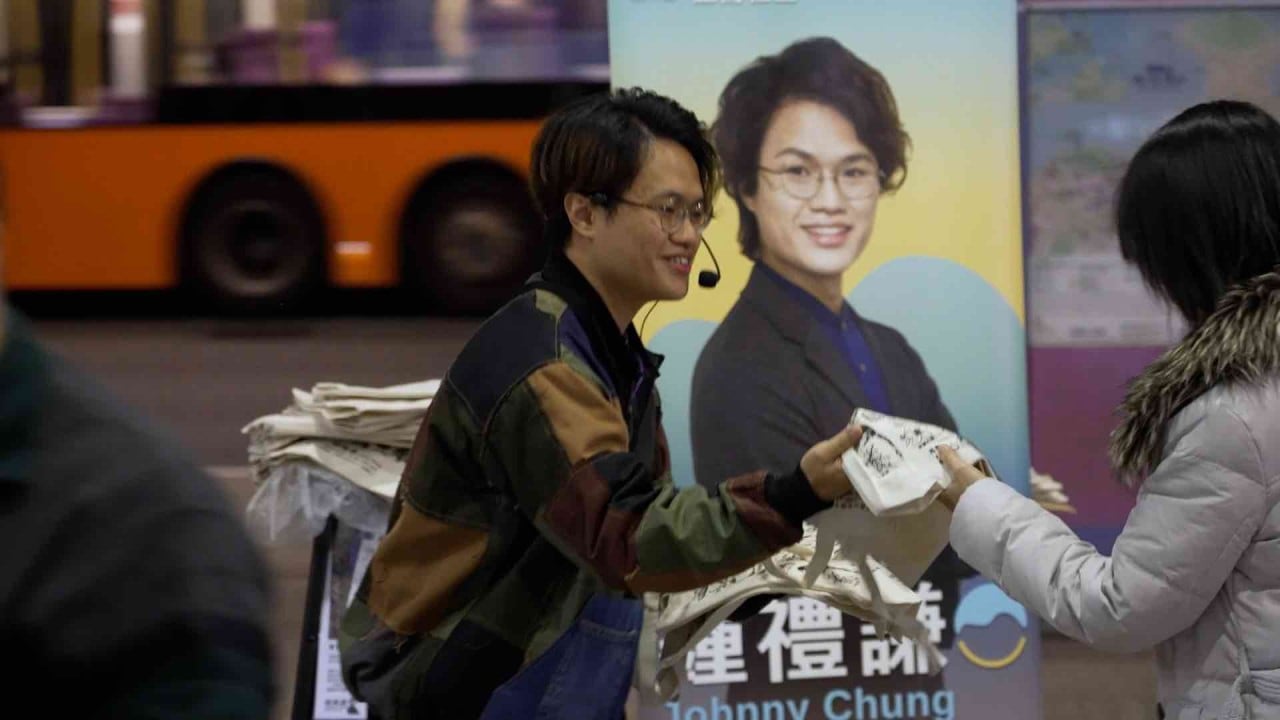
Hong Kong’s new district councillors propose neighbourhood fairs and Instagrammable ‘check-in’ spots to boost growth, but will residents and visitors join the party?
- Government has called on newly elected politicians to do their part to stimulate economic growth
- But only two of 18 district councils are proposing events with local flair and experts warn weak desire to spend and overlapping schedules may cause parties to fizzle out
Hong Kong’s revamped district councils have proposed holding carnivals in their neighbourhoods and creating Instagrammable “check-in” spots to help boost growth, but economists and tourism sector leaders remain sceptical over whether the ideas will be successful.
Among the initiatives proposed was a Thailand-style festival carnival in Kowloon City, where the Southeast Asian nation’s cultural influence can be felt, as well as decorating the celebrated wishing tree in Tai Po.

In addition to booths selling signature delicacies and handmade items specific to each district, the fairs would feature live performances and offer attendees incentives to spend at nearby shopping malls and stores.
At least six district councils intended to hold fairs centred around the Lantern Festival, which falls on February 24, while others such those in Sai Kung, Southern and Eastern districts would stage events celebrating traditional Chinese religious figures, such as the sea deities Tam Kung and Tin Hau, whose birthdays are marked in May.

The new councillors also suggested festooning local attractions with special lights, including the wishing tree in Lam Tsuen in Tai Po district, to lure people.
“The array of fairs will definitely help enhance the vibe within each community,” Hong Kong Tourism Association executive director Timothy Chui Ting-pong said. “Residents get to meet each other thanks to them, thus harmonising the districts.”
But he expressed doubt over the economic power of the events, pointing to the weak desire among residents to spend locally when deals beckon over the border.
According to the Immigration Department, Hongkongers made more than 1.05 million trips out of the city between December 24 and 26, with most heading across the border to nearby cities such as Shenzhen.
But visitors, including those from mainland China, made only 360,000 trips into Hong Kong during the three days.
District council seeks community version of ‘Night Vibes Hong Kong’ campaign
Gary Ng Cheuk-yan, a senior economist with Natixis Corporate and Investment Bank, described the proposals as “checking boxes” rather than “making the pie bigger”.
“For example, those in the catering industry might suffer a business loss as some of their patrons might be drawn to the food booths at the fairs,” he said. “I think that is highly possible to happen given Hongkongers stay conservative when it comes to consumption.
“If there is no long-term planning, these short-term fairs will do little in bringing in concrete economic benefits to the city.”
Only two district councils proposed fairs that relied on their own area’s distinct characteristics – the Kowloon City Thailand festival in April and Sham Shui Po’s event to showcase digital products and fashion design between February and March.
Paul Chan Chi-yuen, co-founder of tourism company Walk in Hong Kong, said the mere creation of photogenic spots or hyperlocal markets might not be enough to attract visitors if the events lacked distinctiveness.
“You can find photogenic spots everywhere and you can hardly sustain interest,” he warned, adding that each district might end up competing for the attention of the same pool of people, potentially diluting the impact.
“I think we need, in the long run, a more strategic blueprint for attracting tourists, in which we see clearer strategic goals and better coordination among different parties,” Chan said.
Hong Kong’s retail sales rise by 15.9% in November compared with year earlier
Economist Andy Kwan Cheuk-chiu cautioned against holding so many similar events around the same time and said districts should take turns staging fairs that had different themes.
“It takes a long time to turn fairs into something that can generate profit and bring in more consumption power,” Kwan, the director of the ACE Centre for Business and Economic Research, said. “You have to remind and convince residents and tourists that a certain fair is unique or can only be held in a certain district by constantly organising it.
“Don’t treat short-term fairs as a new engine for growth.”
Additional reporting by Kahon Chan


